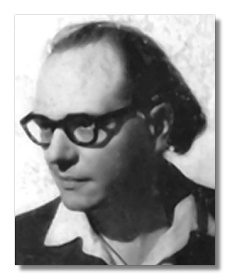
The Internet's Premier Classical Music Source
Related Links
-
Find CDs & Downloads
Amazon - UK - Germany - Canada - France - Japan
ArkivMusic - CD Universe
Find DVDs & Blu-ray
Amazon - UK - Germany - Canada - France - Japan
ArkivMusic-Video Universe
Find Scores & Sheet Music
Sheet Music Plus -
- Olivier Messiaen Web Page
by Malcolm Ball - 1992 Obituary
in the Musical Times
Recommended Links
Site News
Olivier Messiaen

(1908 - 1992)
French composer and organist, one of the most influential teachers of this century. Messiaen was organist at the Sainte Trinite cathedral, and composed a large body of organ music. His harmonic idiom is always highly colorful, and rhythmically ingenius. He was able to unify the rhythmic intensity of Igor Stravinsky with the dodecaphonic technique of Arnold Schoenberg, being one of the first instructors to carefully analyze their music and pave the way for such students as Pierre Boulez and Karlheinz Stockhausen.
Messiaen was also one of the first composers to apply serial principles to rhythmic organization, though serial techniques are used only as one means among many in his arsenal. He had a predilection for cyclic forms, often using juxtaposed blocks of differing sonority in his larger works. His thematic material is drawn primarily from two sources: Catholic religious themes, and birdsong. To this is added an advanced feeling for modality, building on the work of Charles Tournemire. Messiaen composed in every form of the time, though his concertos and symphonic works are not entitled as such. His music revels in naturalistic evocations and spiritual meditation. Finally, his Quartet for the End of Time, composed in a German prison camp, is one of the signature pieces of the mid-twentieth century. ~ Todd McComb
Recommended Recordings
Organ Music (La Nativité du Seigneur, etc.)
- "La Nativité" and "Apparition de l'Eglise Éternelle"/Calliope CAL9928
-
Louis Thiry (organ)
- "Diphyque" and "Les Corps Glorieaux"/Unicorn-Kanchana DKPCD9004
-
Jennifer Bate (organ)
Quatuor pour la fin du temps
- "Quartet for the End of Time"/EMI CDC7474632
-
Deinzer (violin), Gawrilov (clarinet), Palm (cello), A. Kontarsky (piano)
- "Quartet for the End of Time"/RCA Gold Seal
-
Kavafian (violin), Stolzman (clarinet), Sherry (cello), Serkin (piano)
Turangalîla-Symphony
- Symphony "Turanglila"/CBS M2K42271
-
Paul Crossley (piano), Murail (ondes martenot), Esa-Pekka Salonen/BBC
Symphony Orchestra
- Symphony "Turanglila"/EMI CDS7474632
-
Peter Donohoe (piano), Murail (ondes martenot), Simon Rattle/City of Birmingham Symphony Orchestra
- Symphony "Turanglila"/Deutsche Grammophon 431781-2
-
Yvonne Loriod (piano), Jeanne Loriod (ondes martenot), Myung-Whun Chung/Bastille Orchestra
Vingt Regards (piano)
- 20 Pieces "Regards sur l'Enfant-Jésus"/London 430343-2
-
John Ogdon (piano)













